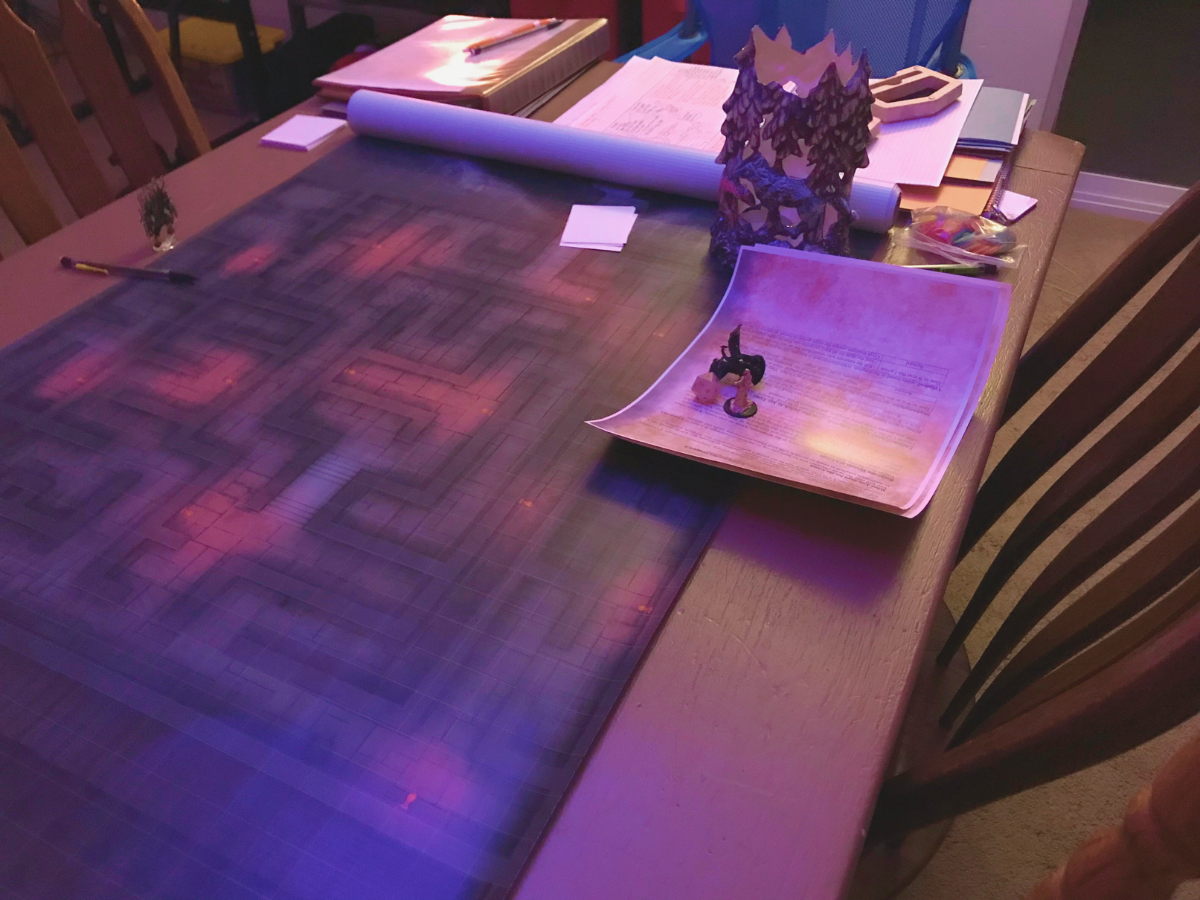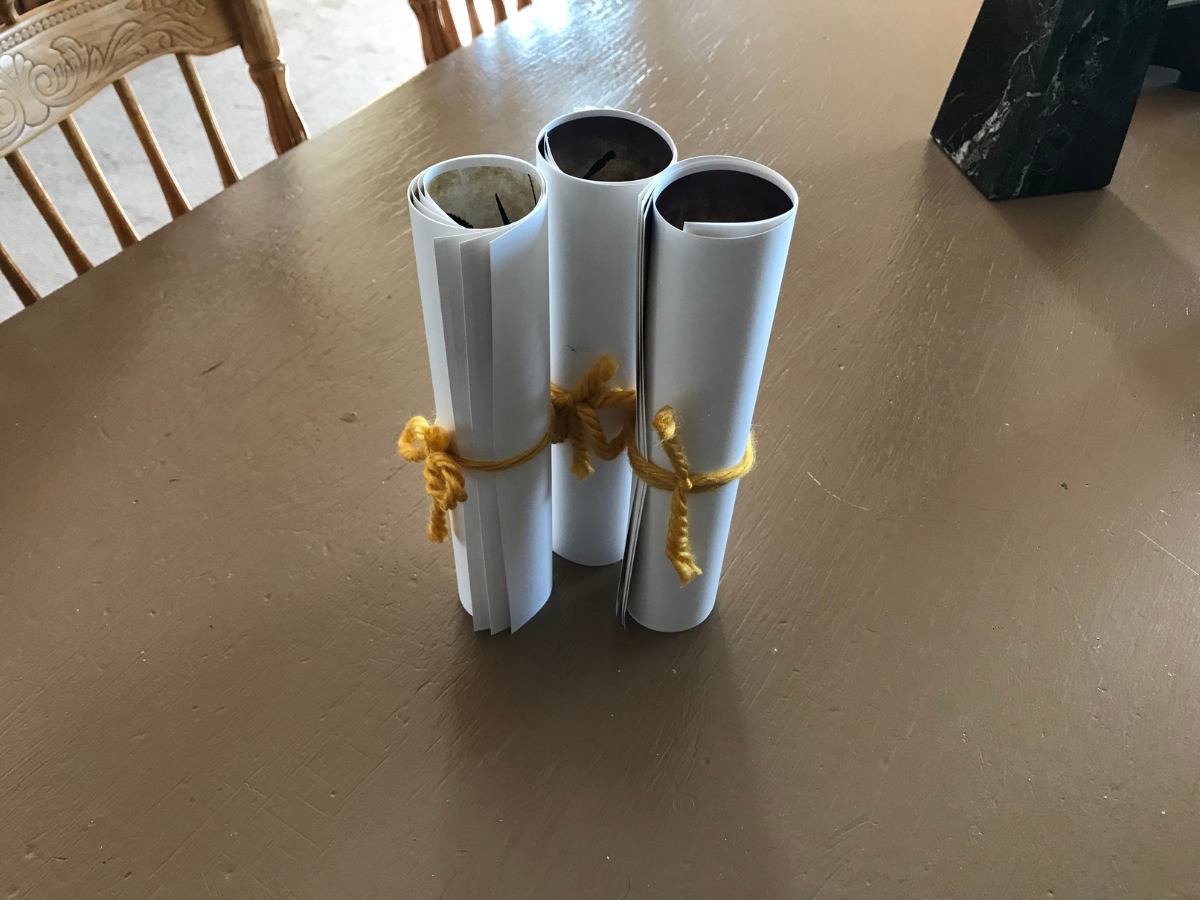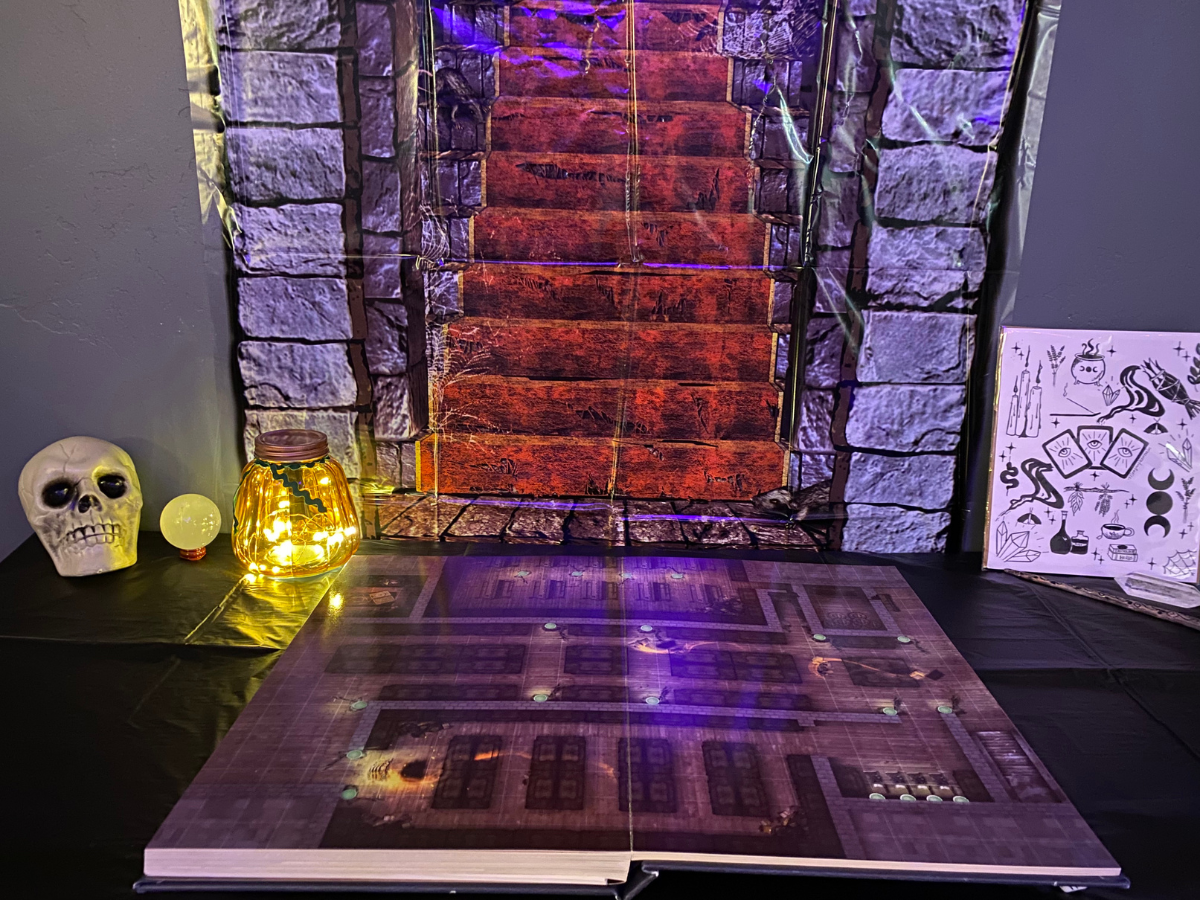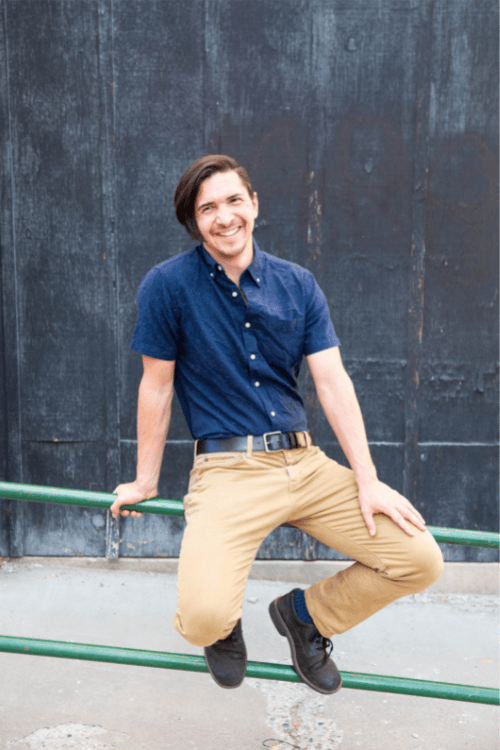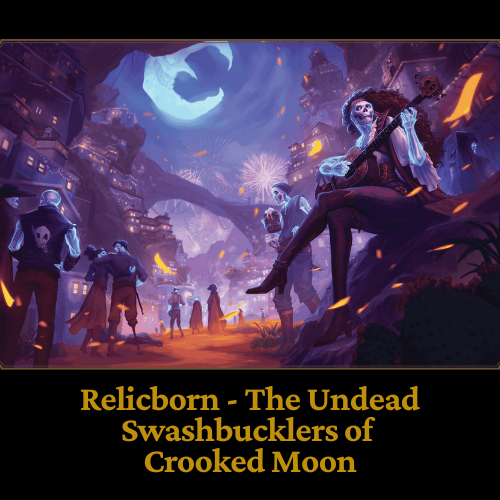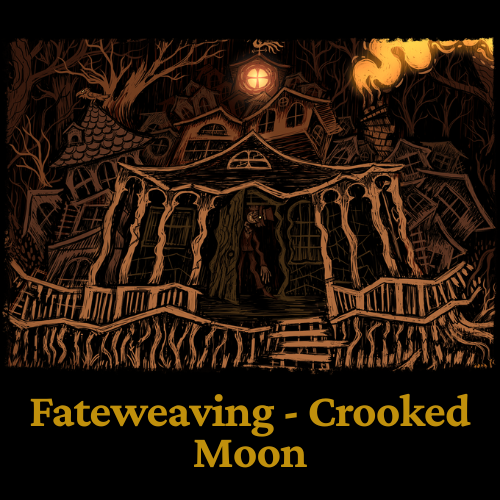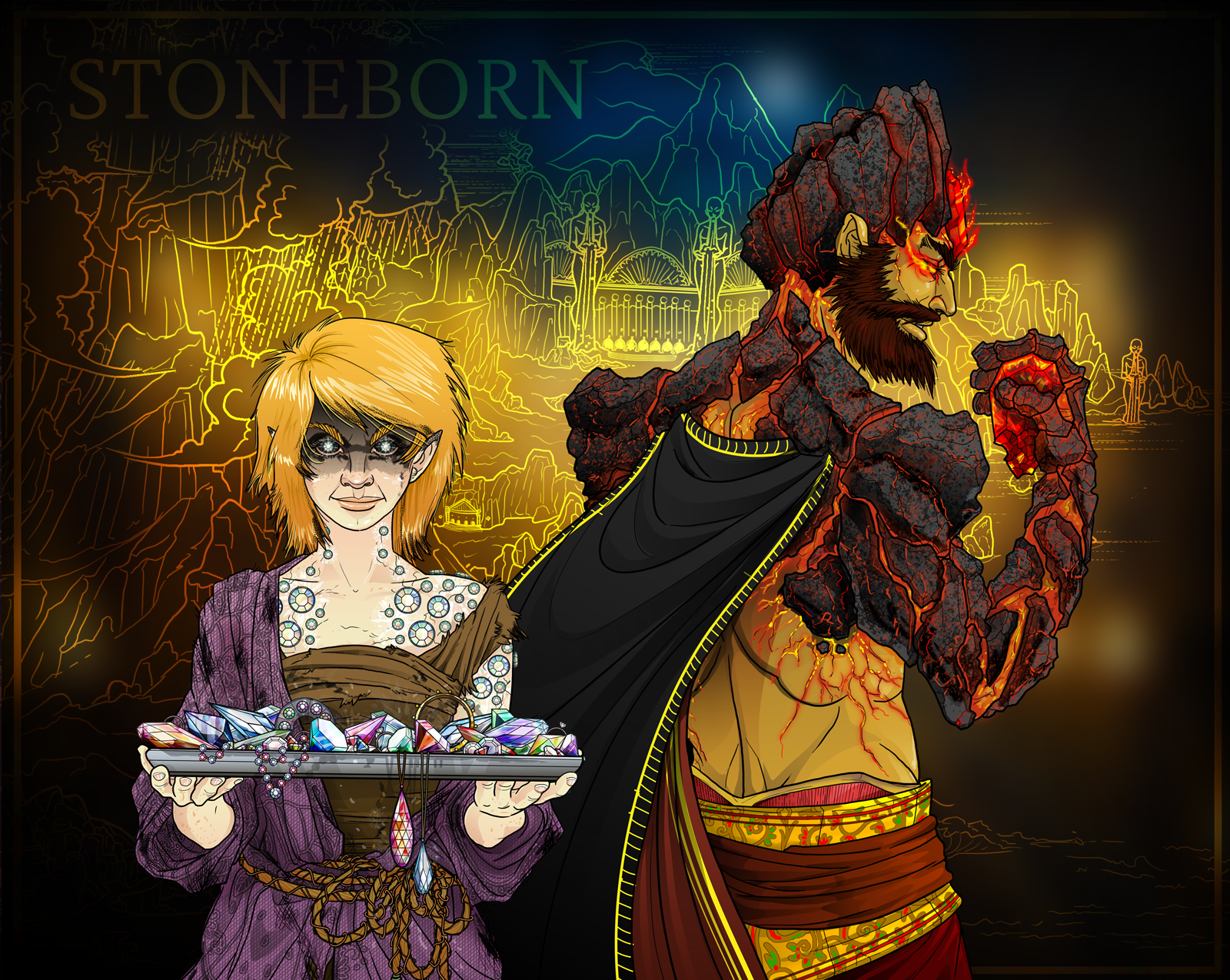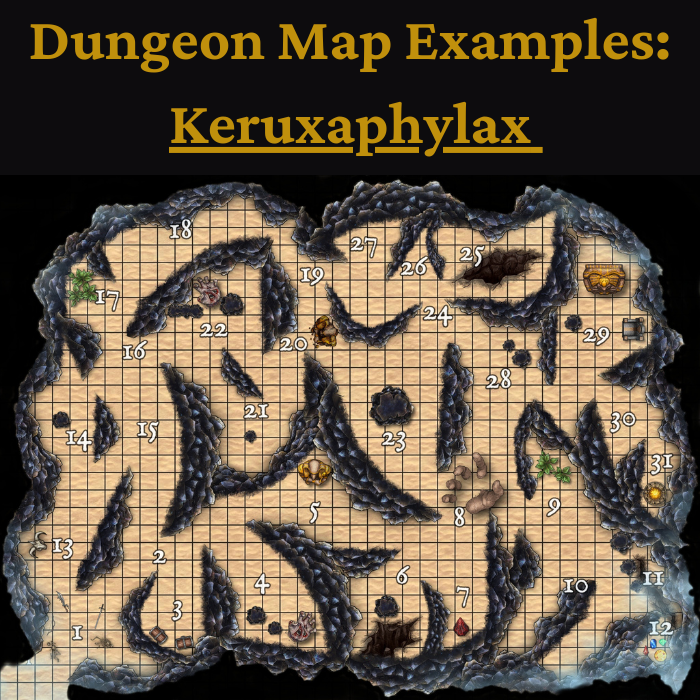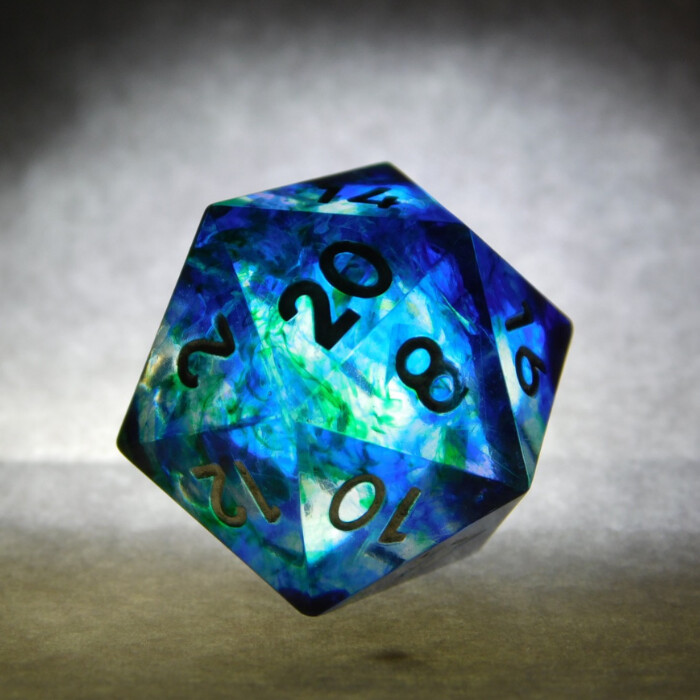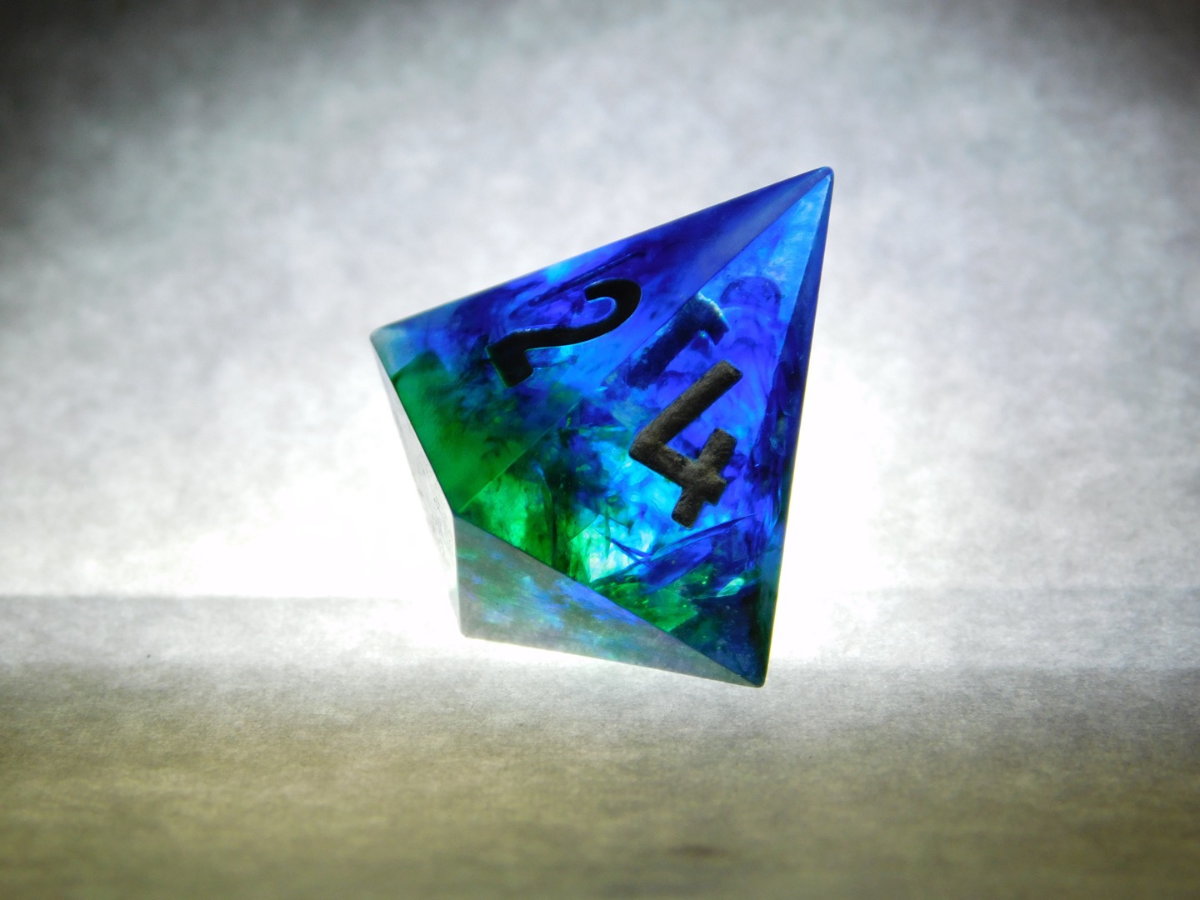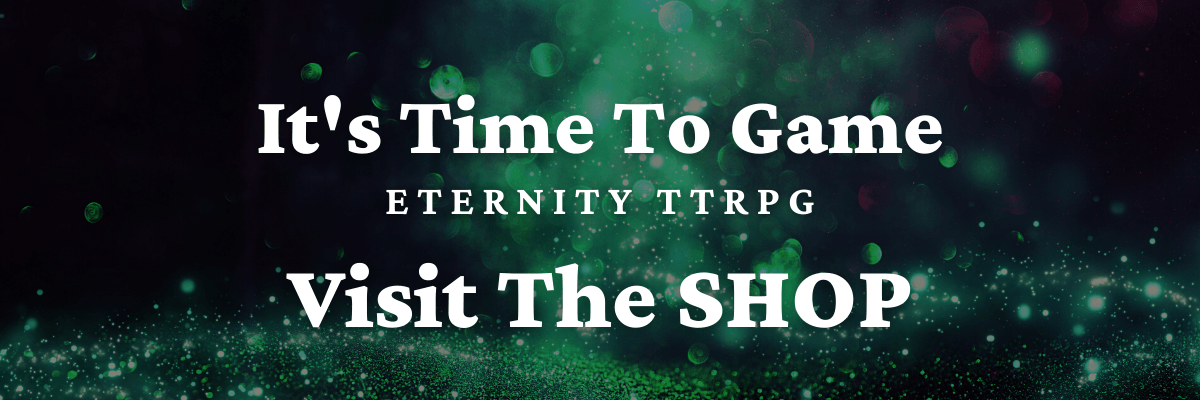Witch Bolt 5e
1st-level evocation
Casting Time: 1 action
Range:
30 feet
Components: V, S, M (a twig from a tree that has been struck by lightning)
Duration: Concentration, up to 1 minute
A beam of crackling, blue energy lances out toward a creature within range, forming a sustained arc of lightning between you and the target. Make a ranged spell attack against that creature. On a hit, the target takes 1d12 lightning damage, and on each of your turns for the duration, you can use your action to deal 1d12 lightning damage to the target automatically. The spell ends if you use your action to do anything else. The spell also ends if the target is ever outside the spell’s range or if it has total cover from you.
At Higher Levels. When you cast this spell using a spell slot of 2nd level or higher, the initial damage increases by 1d12
for each slot level above 1st.
Spell details on Witch Bolt 5e come from the
D&D Player's Handbook.
Classes That May Cast Witch Bolt 5e
The following classes from the D&D Player’s Handbook may cast Witch Bolt:
Witch Bolt is firmly a “main spellcaster” sort of magic. Though the spell isn’t incredibly useful (as you’ll see more about, below), 5e is pretty restrictive on allowing its acquisition to specific classes.
Witch Bolt 5e
1st-level evocation
Casting Time: 1 action
Range:
30 feet
Components: V, S, M (a twig from a tree that has been struck by lightning)
Duration: Concentration, up to 1 minute
A beam of crackling, blue energy lances out toward a creature within range, forming a sustained arc of lightning between you and the target. Make a ranged spell attack against that creature. On a hit, the target takes 1d12 lightning damage, and on each of your turns for the duration, you can use your action to deal 1d12 lightning damage to the target automatically. The spell ends if you use your action to do anything else. The spell also ends if the target is ever outside the spell’s range or if it has total cover from you.
At Higher Levels. When you cast this
spell using a spell slot of 2nd level or higher, the initial damage increases by 1d12
for each slot level above 1st.
Spell details on Witch Bolt 5e come from the
D&D Player's Handbook.
Classes That May Cast Witch Bolt 5e
The following classes from the D&D Player’s Handbook may cast Witch Bolt:
Witch Bolt is firmly a “main spellcaster” sort of magic. Though the spell isn’t incredibly useful (as you’ll see more about, below), 5e is pretty restrictive on allowing its acquisition to specific classes.
Witch Bolt 5e
1st-level evocation
Casting Time: 1 action
Range:
30 feet
Components: V, S, M (a twig from a tree that has been struck by lightning)
Duration: Concentration, up to 1 minute
A beam of crackling, blue energy lances out toward a creature within range, forming a sustained arc of lightning between you and the target. Make a ranged spell attack against that creature. On a hit, the target takes 1d12 lightning damage, and on each of your turns for the duration, you can use your action to deal 1d12 lightning damage to the target automatically. The spell ends if you use your action to do anything else. The spell also ends if the target is ever outside the spell’s range or if it has total cover from you.
At Higher Levels. When you cast this spell using a spell slot of 2nd level or higher, the initial
damage increases by 1d12 for each slot level above 1st.
Spell details on Witch Bolt 5e come from the
D&D Player's Handbook.
Classes That May Cast Witch Bolt 5e
The following classes from the D&D Player’s Handbook may cast Witch Bolt:
Witch Bolt is firmly a “main spellcaster” sort of magic. Though the spell isn’t incredibly useful (as you’ll see more about, below), 5e is pretty restrictive on allowing its acquisition to specific classes.
-
-
Sold Out
![Dungeon A Day Subscription]()
![Dungeon A Day Subscription]()
-
-
-
Sold Out
![Dungeon A Day Subscription]()
![Dungeon A Day Subscription]()
-
Witch Bolt Spell Damage
Witch Bolt deals 1d12 damage when it hits, which scales by an additional 1d12 damage on the initial attack, for each spell level used.
- 1st-Level Spell:
1d12 damage + 1d12 damage per turn (average 6.5 damage plus 6.5 damage per turn). A fighter of this level does an average of 11 damage per attack.
- 2nd-Level Spell:
2d12 damage + 1d12 damage per turn (average 13 damage plus 6.5 damage per turn). A fighter of this level does an average of 15 damage per attack.
- 3rd-Level Spell:
3d12 damage + 1d12 damage per turn (average 19.5 damage plus 6.5 damage per turn). A fighter of this level does an average of 19 damage per attack.
- 4th-Level Spell:
4d12 damage + 1d12 damage per turn (average 26 damage plus 6.5 damage per turn). A fighter of this level does an average of 23 damage per attack.
- 5th-Level Spell:
5d12 damage + 1d12 damage per turn (average 32.5 damage plus 6.5 damage per turn). A fighter of this level does an average of 27 damage per attack.
- 6th-Level Spell:
6d12 damage + 1d12 damage per turn (average 39 damage plus 6.5 damage per turn). A fighter of this level does an average of 30.5 damage per attack.
- 7th-Level Spell:
7d12 damage + 1d12 damage per turn (average 45.5 damage plus 6.5 damage per turn). A fighter of this level does an average of 34 damage per attack.
- 8th-Level Spell:
8d12 damage + 1d12 damage per turn (average 52 damage plus 6.5 damage per turn). A fighter of this level does an average of 37.5 damage per attack.
- 9th-Level Spell:
9d12 damage + 1d12 damage per turn (average 58.5 damage plus 6.5 damage per turn). A fighter of this level does an average of 41 damage per attack.
As you can see, Witch Bolt 5e scales terribly with higher spell levels. Perhaps if the spell continued to deal the higher damage per round, it could be a viable option. However, compared to other spells, even if Witch Bolt did scale better, it still does very little damage. Just consider that a fighter gets multiple attacks per round as they increase in levels, and you can imagine how easily Witch Bolt falls off.
Spell Damage Comparison
The spell damage listed above doesn’t account for hit chance, but purely shows damage dealt if attacks hit. Witch Bolt 5e is also compared to a fighter’s average damage per round (DRP), roughly estimated to match spell levels for Witch Bolt.
Witch Bolt 5e Usefulness
Truthfully, Witch Bolt 5e is an awful spell. The Witch Bolt name is cool, but that doesn’t make up for its lack of power.
Basically, compare Witch Bolt to spells like
Burning Hands 5e (also a 1st-level evocation spell) or even
Call Lightning 5e or
Destructive Wave 5e, which can all deal area of effect spell damage. As I’ve mentioned in many articles, any spells in D&D 5e that may attack multiple targets at once are basically broken.
To give you the short version of my article on Burning Hands, if you hit 3-targets with that spell, you’ll deal anywhere from 31-damage (when cast as a 1st-level spell) all the way up to 115-damage (when cast as a 9th-level spell). Then, compare that to Witch Bolt 5e, which deals a pathetic 6.5-damage per turn, requiring multiple actions for additional damage.
The one saving grace about Witch Bolt is that the spell can by cast once but then deal continual damage each turn, for the cost of one action. In the right circumstances – by which I mean almost perfect circumstances – this spell could be somewhat useful.
Problems with Witch Bolt
Witch Bolt has many, many problems which keep it from being even a mid-tier spell. If, somehow, the designers of D&D decided to fix these issues in a future version of the game, then perhaps Witch Bolt could take its place in the game as a viable spell choice.
Until that time, however, I’d recommend that you stay away from using spell slots on Witch Bolt 5e – unfortunately.
Though I love the theme of this spell and its overall vibe could create some great
DnD Quest Ideas, this is also the sort of spell that if you rely on it too much as a player, you may end up with a
TPK.
Low Spell Damage
As mentioned, the pure damage of Witch Bolt 5e pales in comparison to many other D&D 5e spells.
Unless you’re basically out of spell slots, and you can guarantee that you’ll be able to continue conducting spell damage to your target for a large number of turns to come, Witch Bolt probably isn’t worth your time to save it into a spell slot.
Lightning Damage Resistance and Immunity
I always feel like it’s worth mentioning damage type resistance, immunity, and weakness. If you aren’t familiar, damage resistance in D&D 5e halves any damage dealt to the target (rounded down). Damage immunity renders all damage of that type completely null. And finally, damage weakness in D&D 5e doubles damage dealt to the target.
When it comes to Lightning damage, in the
D&D Monster Manual, there are 35-creatures with Lightning damage resistance, 10-creatures with Lightning damage immunity, and fully 0-creatures with Lightning damage weakness.
So... uh, you can see where I’m going with this. If I’m going to possibly face 45-creatures with resistance or immunity to a damage type and there are no creatures with weakness, for me, I’m not going to choose that damage type, in most cases.
Of course, your dungeon master may decide to create a unique monster, creature, or enemy and specifically give them Lightning damage weakness for some reason. However, short of that, you just have to assume that any Lightning-based spell is going to be less effective than you’d like.
Taking Other Actions
Though you can continually deal damage each turn with Witch Bolt, you need to spend your action every turn doing so or the spell fades. In D&D, a lot can happen in a single round of combat. As such, I feel that it’s very rare where I can simply choose one single action to take every round.
Realistically, once you start casting Witch Bolt, you’ll end up needing to switch to taking some other action or casting a different spell within a turn or two. Once you switch up your action in order to cover your combat needs though, Witch Bolt instantly ends. Major bummer.
It is worth noting though that you can use your
Bonus Action each turn to do other things, besides casting Witch Bolt.

Witch Bolt-Themed Dice
As a quick off-topic promo, I always like to point out that D&D is an experience, not just a rulebook and set of game rules. Or, at least, I should say that D&D is best when it's an experience. What I mean is that the more you put into your D&D game, the more you and your friends will get out from it.
Not that you always have to roleplay in character, use different voices for NPCs, or dress up in costume for your game sessions. However, if you make a little effort to help yourself and others become immersed in the game, then you will find yourself in the flow of your game's world and story more often than not.
When it comes to being a caster, especially when casting very themed spells like Witch Bolt, I like to bring a little something to the gaming environment. For example, these great blood-soaked dice by Heimdallr would make for great table aesthetics whenever you're casting a damaging spell.
I like the quality of Heimdallr's metal dice, and I like that their dice come in so many color and design options. It's the kind of thing that makes for great
DnD Gifts!
Limited Spell Range
As if the spell’s low damage and limitations on actions weren’t bad enough, an enemy who wants to end your Witch Bolt spell can simply move out of spell range.
If Witch Bolt had, say, 120-foot spell range, then maybe it’d be difficult for enemies to escape your spell, or they’d at least have to really dedicate themselves to do so. However, with only a 30-foot spell range, virtually any enemy can easily walk outside of Witch Bolt’s area of coverage, and instantly end your spell.
Many spells in D&D have a lot more spell range than Witch Bolt’s mere 30-feet, so this point also factors in to why I think the spell is quite bad.
Taking Cover
Any enemy wishing to avoid your Witch Bolt 5e spell can simply take full cover. Now of course, taking full cover isn’t always possible depending the encounter environment.
There are no shields in D&D 5e that provide full cover as well, so taking full cover from a Witch Bolt isn’t always achievable. However, hiding behind just about any wall, boulder, or even large tree could easily end Witch Bolt 5e, making it a relatively poor choice even while battling outdoors. Indoors, it’s virtually guaranteed that an enemy could duck behind a corner and avoid your spell.
Spell Concentration
The list of problems with Witch Bolt 5e goes on... Spell concentration. If you are attacked while casting Witch Bolt, there’s a chance that your spell will end.
Yes, I know that your spell can already end from someone just walking out of spell range, or casually sauntering behind some form of full cover. Yes, I know it’s not fair. But in addition to those already problematic issues, if someone whacks you one, you could also lose your spell.
Great.
Also, since Witch Bolt is a concentration spell, that means that you cannot cast far superior spells, such as:
Normally, spells that require concentration come with some truly terrific bonuses, since there is that chance that your spell can end, when attacked. However, with Witch Bolt 5e, there doesn’t seem to be any of that customary beneficial trade-off.
Casting Witch Bolt at Higher Spell Levels
One of the truly unique and enjoyable parts about playing a spell caster in D&D is that you have the option with so many spells to cast magic using higher-than-normal spell levels.
Usually, when expending higher-level spell slots with magic, you get really dramatic bonuses. Take
Aid 5e, for example, which increases temporary hit points to multiple targets for each spell level, effectively multiplying the spell’s value.
However, with Witch Bolt 5e, when you cast the spell at a higher level, you don’t multiply all damage dealt by the spell. Instead, you only increase the initial spell damage, when cast.
This means that even if you cast Witch Bolt 5e as a 9th-level spell, you deal 9d12 damage on your first turn. Thereafter, however, you still only deal 1d12 damage per turn! Talk about a major rip-off.
Witch Bolt Combinations
I’ve love to say that there’s some saving grace to the Witch Bolt 5e spell, but there really isn’t any. You can use some of the following spell combinations to potentially get a little more out of using this effect, but in reality, it’s pretty much a lost cause.
- Bless: since Witch Bolt is a
ranged spell attack, it benefits from the additional +1d4 to attack rolls given from
Bless 5e.
- Color Spray: normally not the greatest spell,
Color Spray 5e could help you avoid getting hit, and help you keep your Witch Bolt spell concentration going.
- Haste: with
Haste 5e, you get an extra Action every turn, which you could use to deal additional damage with Witch Bolt. This doesn’t add a ton of damage, but it does make a little difference.
- Mage Armor: since Witch Bolt 5e is a concentration spell, if you can lower your chances of being hit by an attack, then you have a better chance of keeping the spell going. Depending on what armor you’re wearing,
Mage Armor 5e can help you there.
Counters to Witch Bolt 5e
Aside from the aforementioned counters to Witch Bolt (full cover, moving out of range, and breaking spell concentration), there isn’t much left to go over. Of course, the counters against Witch Bolt 5e mentioned already are severe enough to make the spell clearly problematic, anyways.
However, since Witch Bolt is a ranged spell attack, it is affected by
Bane 5e, which lowers attack rolls by 1d4. Additionally – and as with virtually every spell –
Silence 5e is a counter as it prevents spell casting within its sphere of effect.
Maximize Witch Bolt
Even after reading about the many negatives of the Witch Bolt 5e spell you decide that you still want to give it a shot, try implementing the following tactics to maximize the spell.
- Attack enemies with low AC: since Witch Bolt is a ranged spell attack, its hit chance goes against AC rather than Dexterity save or something similar.
- Attack immobile enemies: if an enemy has severely-reduced or even zero movement speed, then they can’t walk out of range of Witch Bolt or move behind full cover.
- Attack enemies focused on someone else: if you can prevent yourself from taking damage, then you can keep your spell concentration going. Use Witch Bolt when enemies are focused on one of your allies, and not you.
Just a couple "spell scrolls" we made using printer paper, a little ink, and some random string I found lying around.
Concentration Damage Spells in D&D 5e vs. Eternity TTRPG
As far as a spell category goes, I’d put Witch Bolt 5e into the “concentration damage spell” group. It’s an effect that you can cast once, may be interrupted since it requires concentration, but then may deal additional damage every turn.
In the
Eternity TTRPG Game System, there are a number of spells and effects that have a similar type of grouping to the “concentration damage spell” category.
In D&D 5e, once you hit with Witch Bolt 5e, you can automatically deal additional spell damage each turn, for the cost of an action. In Eternity TTRPG, aside from actual damage over time spells (which continue dealing damage passively, once they hit), all spells like Witch Bolt require attacking the target again, each round. However, the main difference is that in Eternity TTRPG, spells that continue attacking each round don’t require an action to do so. Instead, they become “Instant Actions,” and continue attacking without taking up your turn.
What Classes can Cast Concentration Damage Spells?
Though the “concentration damage spell” category isn’t one that fits neatly into the Eternity TTRPG Game System, it still functions as a good way to describe effects between both games.
To keep it simple though, there are a number of classes in Eternity TTRPG that have concentration damage spell effects, or something similar to Witch Bolt 5e.
Dragon Knight – Core Class Ability
Incinerating Breath: this ability can only be used if you have “Chromatic Breath” selected. This ability can also only be used by the “Dragon.”
After you use this ability on yourself, every time you cast “Chromatic Breath,” roll d20. If you roll 20, deal 1damage. With
each cast of “Chromatic Breath,” you roll 1 number lower to hit (can stack to 14-20 by the 7th use). You can only deal damage with this ability once per turn. If you critical this ability, you can’t use any more Wisdom this turn. You can instead choose to continually maintain this ability for 3Inspiration.
- (Wings of Death) Roll 18-20 on the first “Chromatic Breath,” and 1 number lower to hit attack round after. You can instead choose to continually maintain this critical for 5Inspiration (and 0Wisdom).
- (Knight of the Blood Oath) After you use this critical, every turn, you also roll to deal damage with “Incinerating Breath” to up to 3 enemies in 1Range of the “Dragon,” automatically. This critical also allows you to deal damage with “Incinerating Breath” twice per turn. You can instead choose to continually maintain this critical for 2Intelligence (plus the base 3Inspiration, and 0Wisdom).
- (Memories of Tarscisia) This effect also has a chance to hit whenever the “Dragon” (but not the dragon knight) uses “Eviscerate,” “Draconic Domination,” “Paralyzing Gaze,” or “Primordial Pressure.” However, using these abilities does not lower your chance to hit with “Incinerating Breath.” You can instead choose to continually maintain this critical for 4Inspiration (and 0Wisdom).
Each time the Dragon Knight’s Dragon uses its breath weapon, “Chromatic Breath,” you have an ever-increasing chance to deal additional damage from “Incinerating Breath.” Additionally, this ability may be maintained so that it does not require an action to use the effect.
Concentration Damage Spells in D&D 5e vs. Eternity TTRPG
As far as a spell category goes, I’d put Witch Bolt 5e into the “concentration damage spell” group. It’s an effect that you can cast once, may be interrupted since it requires concentration, but then may deal additional damage every turn.
In the
Eternity TTRPG Game System, there are a number of spells and effects that have a similar type of grouping to the “concentration damage spell” category.
In D&D 5e, once you hit with Witch Bolt 5e, you can automatically deal additional spell damage each turn, for the cost of an action. In Eternity TTRPG, aside from actual damage over time spells (which continue dealing damage passively, once they hit), all spells like Witch Bolt require attacking the target again, each round. However, the main difference is that in Eternity TTRPG, spells that continue attacking each round don’t require an action to do so. Instead, they become “Instant Actions,” and continue attacking without taking up your turn.
What Classes can Cast Concentration Damage Spells?
Though the “concentration damage spell” category isn’t one that fits neatly into the Eternity TTRPG Game System, it still functions as a good way to describe effects between both games.
To keep it simple though, there are a number of classes in Eternity TTRPG that have concentration damage spell effects, or something similar to Witch Bolt 5e.
Dragon Knight – Core Class Ability
Incinerating Breath: this ability can only be used if you have “Chromatic Breath” selected. This ability can also only be used by the “Dragon.”
After you use this ability on yourself,
every time you cast “Chromatic Breath,” roll d20. If you roll 20, deal 1damage. With
each cast of “Chromatic Breath,” you roll 1 number lower to hit (can stack to 14-20 by the 7th use). You can only deal damage with this ability once per turn. If you critical this ability, you can’t use any more Wisdom this turn. You can instead choose to continually maintain this ability for 3Inspiration.
- (Wings of Death) Roll 18-20 on the first “Chromatic Breath,” and 1 number lower to hit attack round after. You can instead choose to continually maintain this critical for 5Inspiration (and 0Wisdom).
- (Knight of the Blood Oath) After you use this critical, every turn, you also roll to deal damage with “Incinerating Breath” to up to 3 enemies in 1Range of the “Dragon,” automatically. This critical also allows you to deal damage with “Incinerating Breath” twice per turn. You can instead choose to continually maintain this critical for 2Intelligence (plus the base 3Inspiration, and 0Wisdom).
- (Memories of Tarscisia) This effect also has a chance to hit whenever the “Dragon” (but not the dragon knight) uses “Eviscerate,” “Draconic Domination,” “Paralyzing Gaze,” or “Primordial Pressure.” However, using these abilities does not lower your chance to hit with “Incinerating Breath.” You can instead choose to continually maintain this critical for 4Inspiration (and 0Wisdom).
Each time the Dragon Knight’s Dragon uses its breath weapon, “Chromatic Breath,” you have an ever-increasing chance to deal additional damage from “Incinerating Breath.” Additionally, this ability may be maintained so that it does not require an action to use the effect.
Concentration Damage Spells in D&D 5e vs. Eternity TTRPG
As far as a spell category goes, I’d put Witch Bolt 5e into the “concentration damage spell” group. It’s an effect that you can cast once, may be interrupted since it requires concentration, but then may deal additional damage every turn.
In the
Eternity TTRPG Game System, there are a number of spells and effects that have a similar type of grouping to the “concentration damage spell” category.
In D&D 5e, once you hit with Witch Bolt 5e, you can automatically deal additional spell damage each turn, for the cost of an action. In Eternity TTRPG, aside from actual damage over time spells (which continue dealing damage passively, once they hit), all spells like Witch Bolt require attacking the target again, each round. However, the main difference is that in Eternity TTRPG, spells that continue attacking each round don’t require an action to do so. Instead, they become “Instant Actions,” and continue attacking without taking up your turn.
What Classes can Cast Concentration Damage Spells?
Though the “concentration damage spell” category isn’t one that fits neatly into the Eternity TTRPG Game System, it still functions as a good way to describe effects between both games.
To keep it simple though, there are a number of classes in Eternity TTRPG that have concentration damage spell effects, or something similar to Witch Bolt 5e.
Dragon Knight – Core Class Ability
Incinerating Breath: this ability can only be used if you have “Chromatic Breath” selected. This ability can also only be used by the “Dragon.”
After you use this ability on yourself, every time you cast “Chromatic Breath,” roll d20. If you
roll 20, deal 1damage. With each cast of “Chromatic Breath,” you roll 1 number lower to hit (can stack to 14-20 by the 7th use). You can only deal damage with this ability once per turn. If you critical this ability, you can’t use any more Wisdom this turn. You can instead choose to continually maintain this ability for 3Inspiration.
- (Wings of Death) Roll 18-20 on the first “Chromatic Breath,” and 1 number lower to hit attack round after. You can instead choose to continually maintain this critical for 5Inspiration (and 0Wisdom).
- (Knight of the Blood Oath) After you use this critical, every turn, you also roll to deal damage with “Incinerating Breath” to up to 3 enemies in 1Range of the “Dragon,” automatically. This critical also allows you to deal damage with “Incinerating Breath” twice per turn. You can instead choose to continually maintain this critical for 2Intelligence (plus the base 3Inspiration, and 0Wisdom).
- (Memories of Tarscisia) This effect also has a chance to hit whenever the “Dragon” (but not the dragon knight) uses “Eviscerate,” “Draconic Domination,” “Paralyzing Gaze,” or “Primordial Pressure.” However, using these abilities does not lower your chance to hit with “Incinerating Breath.” You can instead choose to continually maintain this critical for 4Inspiration (and 0Wisdom).
Each time the Dragon Knight’s Dragon uses its breath weapon, “Chromatic Breath,” you have an ever-increasing chance to deal additional damage from “Incinerating Breath.” Additionally, this ability may be maintained so that it does not require an action to use the effect.
Druid – Core Class Spell
Earth Blades (Magic): Weapon Range, Strike Bonus vs. Dodge or 4Range, Faith vs. Will. If this Spell hits, on every one of the target’s turns, roll d20. On the first turn, if you roll 19-20, they take 1damage. On each successive turn, roll 2 numbers lower to hit (can stack to 7-20 by the 7th turn). You can instead choose to continually maintain this Spell as an aura for 3Intelligence, making it an Instant Action at the start of every Battle.
(Double-Hit): roll 5 numbers lower to hit on the first turn (each turn after is still roll 2 numbers lower).
(Dazed): the effect from “Earth Blades” is temporarily interrupted while you are Dazed.
- (Nature’s Wrath) On the first turn, roll 14-20 (each turn after is still roll 2 numbers lower). You can instead choose to continually maintain this Critical as an aura for 5Intelligence (and 0Wisdom), per target you want to cast at, making it an Instant Action at the start of every Battle.
- (Nature’s Healing) If this Spell hits, the target also deals 1damage less the next time they deal damage. You can instead choose to continually maintain this Critical as an aura for 5Intelligence (and 0Wisdom), per target you want to cast at, making it an Instant Action at the start of every Battle.
- (Primal) Weapon Range +6, Strike Bonus vs. Dodge, or 10Range, Faith vs. Will. You also have these same Range bonuses when casting this Spell, for Battle Duration. You can instead choose to continually maintain this Critical as an aura for 5Intelligence (and 0Wisdom), per target you want to cast at, making it an Instant Action at the start of every Battle.
Once you hit with “Earth Blades,” you have an ever-increasing chance on each one of the target’s turns to deal damage to them. Additionally, this spell may be maintained so that it does not require an action to use the effect.
Pyromancer – Critical Option
Abyssal Flare (Magic): 4Range, -2Faith vs. Will, deals 1damage (deals 2damage to cryomancers).
Even if this Spell misses, you also gain one (1) stack of “Inferno,” which gives you a chance to deal an additional 1damage
with certain pyromancer Spells. Stacks are not consumed when used, and you can gain up to two (2) stacks. When casting “Abyssal Flare,” roll d20. If you roll in the following values – based on your number of “Inferno” stacks – if your attack hits, you instead deal 2damage: 1 stack of “Inferno” (19-20), 2 stacks of “Inferno” (17-20).
(Double-Hit): deals an additional 1damage.
- (Elemental Fire) Every turn, Instantly cast this Spell with -10Faith vs. Will. Instantly casting “Abyssal Flare” in this way does not give you an additional stack of “Inferno.” This Critical effect cannot Double-Hit or give a Block.
“Abyssal Flare” only comes with a Witch Bolt-like effect when you select the “Elemental Fire” critical option which allows you to cast the spell again as an “Instant Action” ever turn, just with a lowered hit chance.
Revenant/ Witch – Core Class Spell
Familiar (Magic): you summon an animal companion with 1HP and stats otherwise the same as the revenant/ witch’s, except with -5Resilience, -5Dodge, and -5Will. On the “Familiar’s” turn, roll d20. If you roll 16-20, they cast any spell you have access to, using your stats. “Familiar” may not use criticals. “Familiar” acts on the same turn as the revenant/ witch.
“Familiar” does not count as a separate character for the purposes of stacking spell effects, and they may not stack the same effect as the revenant/ witch does upon a target, unless the spell specifically states that multiple stacks may be applied.
“Familiar” always has the same stats as the revenant/ witch, whether from level increases, buffs, or debuffs. If the
revenant/ witch receives a debuff, it also affects the “Familiar.” However, the “Familiar” is immune to both Wisdom damage and debuffs that cause recurring damage.
It takes 15minutes to summon/ tame a “Familiar,” so a new “Familiar” cannot be created during combat. You can only
have one “Familiar” active at a time. You continually maintain “Familiar” for 3Inspiration.
(Dazed): while you are Dazed, “Familiar” is also Dazed.
- (Grimly Fated) Roll 12-20. Your “Familiar” also has 2HP. You can instead choose to continually maintain this critical for 6Inspiration (and 0Wisdom).
- (Of the Dread Vale) If your “Familiar” casts a spell at a target, +7Faith vs. Resilience against the same target, gives -3Range on any attacks or actions that normally have 2Range or more for 1turn, even if your familiar misses. This critical effect cannot Double-Hit or give a Block. Your “Familiar” also has 2HP. You can instead choose to continually maintain this critical for 3Intelligence (plus the base 3Inspiration, and 0Wisdom).
- (Witch’s Coven) Spells that your familiar cast also apply poisons that you have added to your weapons, with either +7Strike Bonus vs. Resilience, or +7Faith vs. Resilience, and applies double effect. Your “Familiar” also has 2HP. You can instead choose to continually maintain this critical for 3Intelligence (plus the base 3Inspiration, and 0Wisdom).
“Familiar” is a summon that allows you to cast any spell available to you on turns where the creature gets to act. Though this spell is a bit different than Witch Bolt, it functions similarly, allowing you to continually casting spells. Additionally, summoned creatures must be maintained, meaning that you can essentially get free spell casts, without using an action.
Vampire Mage – Core Class Spell
Mortal Flay (Magic): 4Range, Faith vs. Will. If this Spell hits, on every one of the target’s turns, roll d20. If you roll 16-20, they take 1damage. You can instead choose to continually maintain this Spell as an aura for 3Intelligence, per target you want to cast at, making it an Instant Action at the start of every Battle.
(Double-Hit): roll 5 numbers lower to hit.
(Dazed): the effect from “Mortal Flay” is temporarily interrupted while you are Dazed.
- (Blood Magic) Roll 11-20. You can instead choose to continually maintain this Critical as an aura for 5Intelligence (and 0Wisdom), per target you want to cast at, making it an Instant Action at the start of every Battle.
- (Drain) Even if this Spell misses, roll Faith vs. Resilience, gives either -5Intelligence or -5Inspiration, at your choice. You can instead choose to continually maintain this Critical as an aura for 5Intelligence (and 0Wisdom), per target you want to cast at, making it an Instant Action at the start of every Battle.
- (Vampire’s Coven) If you roll 16-20, also heal yourself or an ally in 4Range +1HP. This Critical allows the affected target to heal 1HP above their normal max HP. Healing from this effect also Fatigues the target, giving -1Resilience, -1Dodge, and -1Will for 1Day Duration (can stack without limit). You can instead choose to continually maintain this Critical as an aura for 5Intelligence (and 0Wisdom), per target you want to cast at, making it an Instant Action at the start of every Battle.
“Mortal Flay” is another damage over time effect that continues to pressure enemies long after you’ve initially cast the spell. Additionally, this spell may be maintained so that instead of requiring an action to use the effect, you may cast it as an “instant action” at the start of battle.
Druid – Core Class Spell
Earth Blades (Magic): Weapon Range, Strike Bonus vs. Dodge or 4Range, Faith vs. Will. If this Spell hits, on every one of the target’s turns, roll d20. On the first turn, if you roll 19-20, they take 1damage. On each successive turn, roll 2 numbers lower to hit (can stack to 7-20 by the 7th turn). You can instead choose to continually maintain this Spell as an aura for 3Intelligence, making it an Instant Action at the start of every Battle.
(Double-Hit): roll 5 numbers lower to
hit on the first turn (each turn after is still roll 2 numbers lower).
(Dazed): the effect from “Earth Blades” is temporarily interrupted while you are Dazed.
- (Nature’s Wrath) On the first turn, roll 14-20 (each turn after is still roll 2 numbers lower). You can instead choose to continually maintain this Critical as an aura for 5Intelligence (and 0Wisdom), per target you want to cast at, making it an Instant Action at the start of every Battle.
- (Nature’s Healing) If this Spell hits, the target also deals 1damage less the next time they deal damage. You can instead choose to continually maintain this Critical as an aura for 5Intelligence (and 0Wisdom), per target you want to cast at, making it an Instant Action at the start of every Battle.
- (Primal) Weapon Range +6, Strike Bonus vs. Dodge, or 10Range, Faith vs. Will. You also have these same Range bonuses when casting this Spell, for Battle Duration. You can instead choose to continually maintain this Critical as an aura for 5Intelligence (and 0Wisdom), per target you want to cast at, making it an Instant Action at the start of every Battle.
Once you hit with “Earth Blades,” you have an ever-increasing chance on each one of the target’s turns to deal damage to them. Additionally, this spell may be maintained so that it does not require an action to use the effect.
Pyromancer – Critical Option
Abyssal Flare (Magic): 4Range, -2Faith vs. Will, deals 1damage (deals 2damage to cryomancers).
Even if this Spell misses, you also gain
one (1) stack of “Inferno,” which gives you a chance to deal an additional 1damage with certain pyromancer Spells. Stacks are not consumed when used, and you can gain up to two (2) stacks. When casting “Abyssal Flare,” roll d20. If you roll in the following values – based on your number of “Inferno” stacks – if your attack hits, you instead deal 2damage: 1 stack of “Inferno” (19-20), 2 stacks of “Inferno” (17-20).
(Double-Hit): deals an additional 1damage.
- (Elemental Fire) Every turn, Instantly cast this Spell with -10Faith vs. Will. Instantly casting “Abyssal Flare” in this way does not give you an additional stack of “Inferno.” This Critical effect cannot Double-Hit or give a Block.
“Abyssal Flare” only comes with a Witch Bolt-like effect when you select the “Elemental Fire” critical option which allows you to cast the spell again as an “Instant Action” ever turn, just with a lowered hit chance.
Revenant/ Witch – Core Class Spell
Familiar (Magic): you summon an animal companion with 1HP and stats otherwise the same as the revenant/ witch’s, except with -5Resilience, -5Dodge, and -5Will. On the “Familiar’s” turn, roll d20. If you roll 16-20, they cast any spell you have access to, using your stats. “Familiar” may not use criticals. “Familiar” acts on the same turn as the revenant/ witch.
“Familiar” does not count as a separate
character for the purposes of stacking spell effects, and they may not stack the same effect as the revenant/ witch does upon a target, unless the spell specifically states that multiple stacks may be applied.
“Familiar” always has the same stats as
the revenant/ witch, whether from level increases, buffs, or debuffs. If the revenant/ witch receives a debuff, it also affects the “Familiar.” However, the “Familiar” is immune to both Wisdom damage and debuffs that cause recurring damage.
It takes 15minutes to summon/ tame a
“Familiar,” so a new “Familiar” cannot be created during combat. You can only have one “Familiar” active at a time. You continually maintain “Familiar” for 3Inspiration.
(Dazed): while you are Dazed, “Familiar” is also Dazed.
- (Grimly Fated) Roll 12-20. Your “Familiar” also has 2HP. You can instead choose to continually maintain this critical for 6Inspiration (and 0Wisdom).
- (Of the Dread Vale) If your “Familiar” casts a spell at a target, +7Faith vs. Resilience against the same target, gives -3Range on any attacks or actions that normally have 2Range or more for 1turn, even if your familiar misses. This critical effect cannot Double-Hit or give a Block. Your “Familiar” also has 2HP. You can instead choose to continually maintain this critical for 3Intelligence (plus the base 3Inspiration, and 0Wisdom).
- (Witch’s Coven) Spells that your familiar cast also apply poisons that you have added to your weapons, with either +7Strike Bonus vs. Resilience, or +7Faith vs. Resilience, and applies double effect. Your “Familiar” also has 2HP. You can instead choose to continually maintain this critical for 3Intelligence (plus the base 3Inspiration, and 0Wisdom).
“Familiar” is a summon that allows you to cast any spell available to you on turns where the creature gets to act. Though this spell is a bit different than Witch Bolt, it functions similarly, allowing you to continually casting spells. Additionally, summoned creatures must be maintained, meaning that you can essentially get free spell casts, without using an action.
Vampire Mage – Core Class Spell
Mortal Flay (Magic): 4Range, Faith vs. Will. If this Spell hits, on every one of the target’s turns, roll d20. If you roll 16-20, they take 1damage. You can instead choose to continually maintain this Spell as an aura for 3Intelligence, per target you want to cast at, making it an Instant Action at the start of every Battle.
(Double-Hit): roll 5 numbers lower to hit.
(Dazed): the effect from “Mortal Flay” is temporarily interrupted while you are Dazed.
- (Blood Magic) Roll 11-20. You can instead choose to continually maintain this Critical as an aura for 5Intelligence (and 0Wisdom), per target you want to cast at, making it an Instant Action at the start of every Battle.
- (Drain) Even if this Spell misses, roll Faith vs. Resilience, gives either -5Intelligence or -5Inspiration, at your choice. You can instead choose to continually maintain this Critical as an aura for 5Intelligence (and 0Wisdom), per target you want to cast at, making it an Instant Action at the start of every Battle.
- (Vampire’s Coven) If you roll 16-20, also heal yourself or an ally in 4Range +1HP. This Critical allows the affected target to heal 1HP above their normal max HP. Healing from this effect also Fatigues the target, giving -1Resilience, -1Dodge, and -1Will for 1Day Duration (can stack without limit). You can instead choose to continually maintain this Critical as an aura for 5Intelligence (and 0Wisdom), per target you want to cast at, making it an Instant Action at the start of every Battle.
“Mortal Flay” is another damage over time effect that continues to pressure enemies long after you’ve initially cast the spell. Additionally, this spell may be maintained so that instead of requiring an action to use the effect, you may cast it as an “instant action” at the start of battle.
Druid – Core Class Spell
Earth Blades (Magic): Weapon Range, Strike Bonus vs. Dodge or 4Range, Faith vs. Will. If this Spell hits, on every one of the target’s turns, roll d20. On the first turn, if you roll 19-20, they take 1damage. On each successive turn, roll 2 numbers lower to hit (can stack to 7-20 by the 7th turn). You can instead choose to continually maintain this Spell as an aura for 3Intelligence, making it an Instant Action at the start of every Battle.
(Double-Hit): roll 5 numbers lower to hit on the first turn (each turn after is still roll 2
numbers lower).
(Dazed): the effect from “Earth Blades” is temporarily interrupted while you are Dazed.
- (Nature’s Wrath) On the first turn, roll 14-20 (each turn after is still roll 2 numbers lower). You can instead choose to continually maintain this Critical as an aura for 5Intelligence (and 0Wisdom), per target you want to cast at, making it an Instant Action at the start of every Battle.
- (Nature’s Healing) If this Spell hits, the target also deals 1damage less the next time they deal damage. You can instead choose to continually maintain this Critical as an aura for 5Intelligence (and 0Wisdom), per target you want to cast at, making it an Instant Action at the start of every Battle.
- (Primal) Weapon Range +6, Strike Bonus vs. Dodge, or 10Range, Faith vs. Will. You also have these same Range bonuses when casting this Spell, for Battle Duration. You can instead choose to continually maintain this Critical as an aura for 5Intelligence (and 0Wisdom), per target you want to cast at, making it an Instant Action at the start of every Battle.
Once you hit with “Earth Blades,” you have an ever-increasing chance on each one of the target’s turns to deal damage to them. Additionally, this spell may be maintained so that it does not require an action to use the effect.
Pyromancer – Critical Option
Abyssal Flare (Magic): 4Range, -2Faith vs. Will, deals 1damage (deals 2damage to cryomancers).
Even if this Spell misses, you also gain one (1) stack of “Inferno,” which gives you a chance to
deal an additional 1damage with certain pyromancer Spells. Stacks are not consumed when used, and you can gain up to two (2) stacks. When casting “Abyssal Flare,” roll d20. If you roll in the following values – based on your number of “Inferno” stacks – if your attack hits, you instead deal 2damage: 1 stack of “Inferno” (19-20), 2 stacks of “Inferno” (17-20).
(Double-Hit): deals an additional 1damage.
- (Elemental Fire) Every turn, Instantly cast this Spell with -10Faith vs. Will. Instantly casting “Abyssal Flare” in this way does not give you an additional stack of “Inferno.” This Critical effect cannot Double-Hit or give a Block.
“Abyssal Flare” only comes with a Witch Bolt-like effect when you select the “Elemental Fire” critical option which allows you to cast the spell again as an “Instant Action” ever turn, just with a lowered hit chance.
Revenant/ Witch – Core Class Spell
Familiar (Magic): you summon an animal companion with 1HP and stats otherwise the same as the revenant/ witch’s, except with -5Resilience, -5Dodge, and -5Will. On the “Familiar’s” turn, roll d20. If you roll 16-20, they cast any spell you have access to, using your stats. “Familiar” may not use criticals. “Familiar” acts on the same turn as the revenant/ witch.
“Familiar” does not count as a separate character for the purposes of stacking spell effects, and they may not stack the same effect as the revenant/ witch does upon a target, unless the spell specifically states that multiple stacks may be applied.
“Familiar” always has the same stats as the revenant/ witch, whether from level increases,
buffs, or debuffs. If the revenant/ witch receives a debuff, it also affects the “Familiar.” However, the “Familiar” is immune to both Wisdom damage and debuffs that cause recurring damage.
It takes 15minutes to summon/ tame a “Familiar,” so a new “Familiar” cannot be created
during combat. You can only have one “Familiar” active at a time. You continually maintain “Familiar” for 3Inspiration.
(Dazed): while you are Dazed, “Familiar” is also Dazed.
- (Grimly Fated) Roll 12-20. Your “Familiar” also has 2HP. You can instead choose to continually maintain this critical for 6Inspiration (and 0Wisdom).
- (Of the Dread Vale) If your “Familiar” casts a spell at a target, +7Faith vs. Resilience against the same target, gives -3Range on any attacks or actions that normally have 2Range or more for 1turn, even if your familiar misses. This critical effect cannot Double-Hit or give a Block. Your “Familiar” also has 2HP. You can instead choose to continually maintain this critical for 3Intelligence (plus the base 3Inspiration, and 0Wisdom).
- (Witch’s Coven) Spells that your familiar cast also apply poisons that you have added to your weapons, with either +7Strike Bonus vs. Resilience, or +7Faith vs. Resilience, and applies double effect. Your “Familiar” also has 2HP. You can instead choose to continually maintain this critical for 3Intelligence (plus the base 3Inspiration, and 0Wisdom).
“Familiar” is a summon that allows you to cast any spell available to you on turns where the creature gets to act. Though this spell is a bit different than Witch Bolt, it functions similarly, allowing you to continually casting spells. Additionally, summoned creatures must be maintained, meaning that you can essentially get free spell casts, without using an action.
Vampire Mage – Core Class Spell
Mortal Flay (Magic): 4Range, Faith vs. Will. If this Spell hits, on every one of the target’s turns, roll d20. If you roll 16-20, they take 1damage. You can instead choose to continually maintain this Spell as an aura for 3Intelligence, per target you want to cast at, making it an Instant Action at the start of every Battle.
(Double-Hit): roll 5 numbers lower to hit.
(Dazed): the effect from “Mortal Flay” is temporarily interrupted while you are Dazed.
- (Blood Magic) Roll 11-20. You can instead choose to continually maintain this Critical as an aura for 5Intelligence (and 0Wisdom), per target you want to cast at, making it an Instant Action at the start of every Battle.
- (Drain) Even if this Spell misses, roll Faith vs. Resilience, gives either -5Intelligence or -5Inspiration, at your choice. You can instead choose to continually maintain this Critical as an aura for 5Intelligence (and 0Wisdom), per target you want to cast at, making it an Instant Action at the start of every Battle.
- (Vampire’s Coven) If you roll 16-20, also heal yourself or an ally in 4Range +1HP. This Critical allows the affected target to heal 1HP above their normal max HP. Healing from this effect also Fatigues the target, giving -1Resilience, -1Dodge, and -1Will for 1Day Duration (can stack without limit). You can instead choose to continually maintain this Critical as an aura for 5Intelligence (and 0Wisdom), per target you want to cast at, making it an Instant Action at the start of every Battle.
“Mortal Flay” is another damage over time effect that continues to pressure enemies long after you’ve initially cast the spell. Additionally, this spell may be maintained so that instead of requiring an action to use the effect, you may cast it as an “instant action” at the start of battle.
In our Halloween game I had a second mini table set up for when players would get summoned to the "Witch's Altar."
Strategies for Using Continual Damage Spells
In Eternity TTRPG, since the game features a dynamic initiative system (see the Eternity TTRPG
Initiative Tracker for an explanation of what that means, exactly), there’s a near-infinite number of ways to benefit from continual damage spells.
Target High-Initiative Enemies
Since damage over time effects always take place on your target’s turns, they’re the perfect counter to high-initiative enemies. Basically, you could build a high hit chance character with low initiative, DoT your target(s), then let their high initiative deal loads of continual damage to them.
Attack Fast or Ranged Enemies
In Eternity TTRPG, characters can build truly incredible amounts of movement speed or range for their attacks. In many cases, it’s possible for enemies to outrange you or simply become too fast to ever hunt down.
Particularly if you have a relatively slow character or fight in melee range, using a damage over time effect on your target could be the difference between life or death.
The idea is that once you hit them with a DoT, no matter how fast they run or how much range away they attack from, you’ll keep doing consistent damage to them.
Maximize Your Hit Chance
If you’re playing a pyromancer and utilizing the “Elemental Fire” critical option for spells like “Abyssal Flare,” whenever you increase your Faith (spell hit chance) you’re effectively getting double value.
For every Faith, you get +5% hit chance with your action each round. Then, you also get +5% hit chance with your instant cast of “Abyssal Flare” each turn. This sort of strategy gets you double value for every point of Faith your character has, making that high hit chance build absolutely devastating.
Interested in the Eternity TTRPG Game System?
I know you’ve probably been playing D&D for 10-years, and you know the game in and out. But, there are many great
TTRPG systems out there, and the Eternity TTRPG Game System is one that I would like to shamelessly promote to you.
Eternity TTRPG allows for multiple game masters in your group (while still keeping your world and story chaos-free), every character/ class is balanced in and out of combat, and there aren’t worthless spells like Witch Bolt – to be frank.
If you want to check it out, the
PDF version of the game is available for download.

